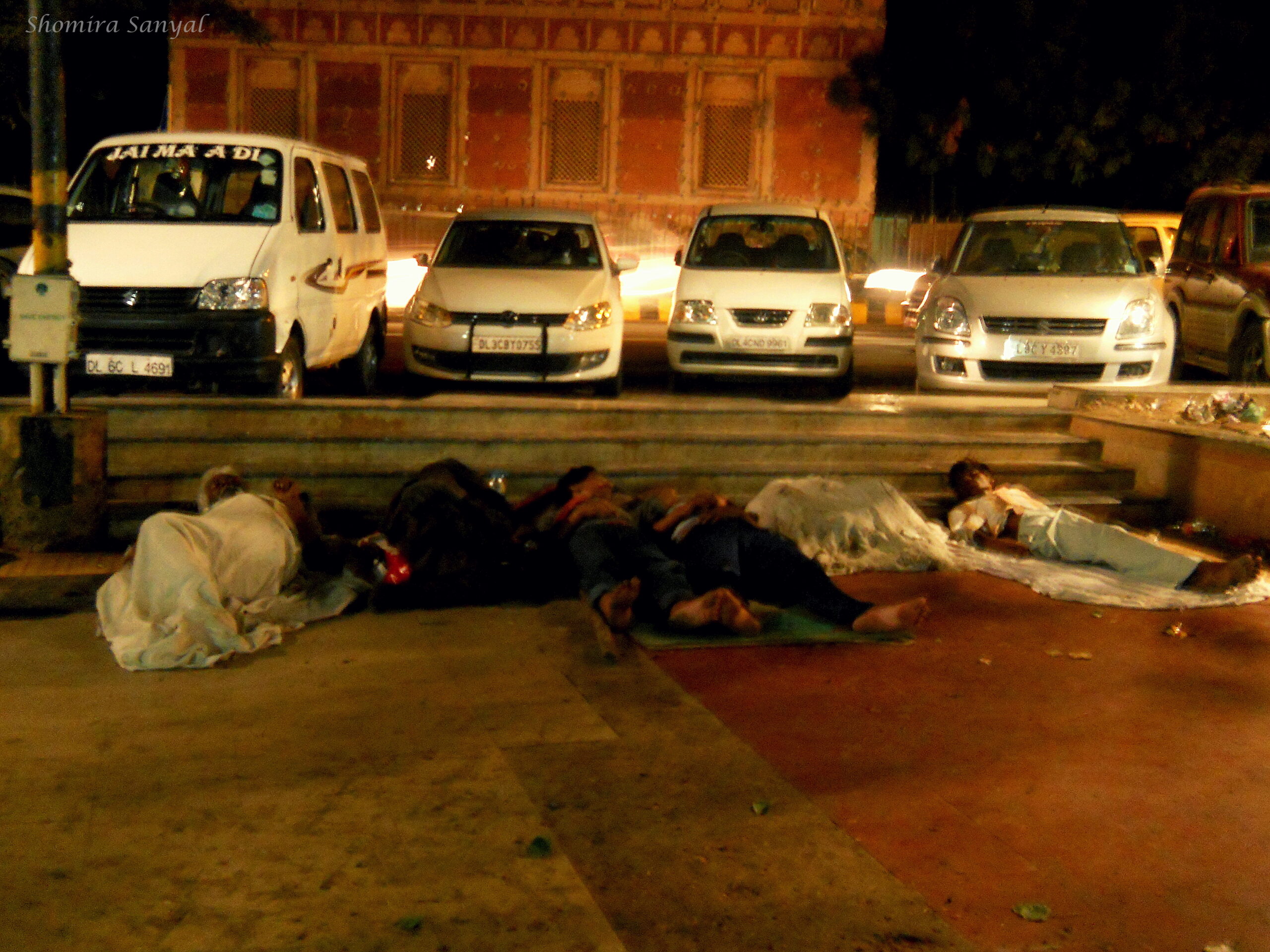“Home is where the hearth is – or under the stars”
October 25 India’s capital region has a growing population of homeless people, writes Shomira Sanyal,19, a Correspondent from New Delhi, India. She joined a program to meet some of those who live on the streets, and to learn about their daily struggles.
India’s capital region has a growing population of homeless people, writes Shomira Sanyal,19, a Correspondent from New Delhi, India. She joined a program to meet some of those who live on the streets, and to learn about their daily struggles.
About two weeks ago, I had the opportunity to participate in the ‘Under The Stars Campaign’.
The endeavour encouraged people to spend a night with the homeless, to interact with them and to realize what homelessness really feels like. It was held on the night of 1st October, 2013 till 2nd morning, Gandhi Jayanti.
This event, ideated by a small team in Bangalore (http://indiaunderthestars.com/question.php), with the national leg of the event being supported by organisations like Aman Biradari, IGSSS, Pehchan, and ActionAid. (http://indiaunderthestars.com/index.php), appeared to me a novel concept. Even though I have worked with the poor in rural India, this was an issue that concerned the poor and homeless in the urban areas.
I had never experienced something like this before. What did it feel like every night, to stay without much food or shelter, no protection, living each day at a time and carrying on with one’s personal and family life this way, for years? It got me thinking: why is it that an issue as glaring as this one never really seems to affect our consciousness?
Census estimates put the number of homeless in urban India at approximately 9.42 lakh (http://articles.timesofindia.indiatimes.com/2013-08-14/india/41409582_1_urban-homeless-urban-population-growth-rate) while the National Capital Territory of Delhi itself has witnessed a skyrocketing increase in its urban homeless population. Figures mentioned in the Census of 2011 have been contested by many CSOs (http://articles.timesofindia.indiatimes.com/2011-03-05/delhi/28658612_1_census-count-homeless-people-ngos and http://citymakers.wordpress.com/2011/03/23/enumerating-the-homeless-census-2011/), but the
reality is that there are millions who live like this every day, scrounging for food, taking to begging, harassed by the authorities and often struggling to survive.
Some people with whom I interacted at Connaught Place in Delhi were migrants, having come all the way from different corners of the country in the hope of finding work in this metropolitan city, the capital of our country. Most had tales of everyday harassment by policemen, who shunned them and often beat them in order to get them to vacate areas that constituted “posh” areas in the city. The homeless are treated as no more than blots on the gloss of lifestyles and places that were far beyond their reach.
Vandana (name changed), a young homeless widow, spoke with me that night, telling me how her family had inhabited this particular area for many years, their profession being that of selling balloons at traffic signals. The family would make a measly amount of Rs. 200 a day (approx. $4). About half of it was spent in procuring balloons and thus nothing much was left over. Whatever little remained was utilized for raising her four children. As for their food, they would eat the free langar served at the Bangla Sahib Gurdwara nearby.
Vandana’s tale was just one of many. Others complained that they did not have identity proofs, thereby making it difficult for them to procure ration. Some said how difficult it was for them in the extreme winters that Delhi witnesses each year, with hardly any clothes and warm blankets being a distant dream. Most women said they worked as domestic help in houses close-by. Others resorted to begging, often being caught and put into jails. As for sleeping at night, there were a few shelter homes being run by some NGOs, but they could not accommodate everyone, even though they were trying their best.
All this presented to me a grim picture of the struggles of people for an everyday existence. I could not help but appreciate what I do have, which many don’t. We often tend to overlook these large and “invisible” populations, probably because we do not see them collectively, or because they are so enmeshed in our urban lives as objects existing on the fringes of our consciousness, but never really forming an important or relevant part of it.
The next time you wait in an auto or a bus at a traffic signal, take a minute to actually wonder about that little child who comes to sell you pens, or dusting cloths or toys. Perhaps then we will be more sensitive to their cause.
While one night was clearly not enough to understand the severity and extent of this issue, I realized that this is something that faces us everywhere we go: on the roads, in the railway stations, bus stops and so on. With large populations migrating to urban areas, cities are often saturated beyond their capacity.
This does not mean, however, that a person should be denied his/her basic rights. It is very important to be empathetic, and not sympathetic. While most of us live in the comfort of our homes, with our many luxuries, there are those who are deprived of the basic necessities and amenities. It is vital that we understand these realities, do something about them and understand the value of what we have rather than complain about what we don’t.
It is not charity that I am talking about, but bringing about systemic changes and inclusiveness in the society, where one day even the most poor, deprived and marginalized citizens can be given the opportunity to live a life of dignity.
Photo: Shomira Sanyal
…………………………………………………………………………………………………………………
About me: I am pursuing a Bachelor’s Degree in Sociology at LadyShriRamCollege, New Delhi. I enjoy reading, travelling and meeting people.
I have deep interest in developmental work that will improve the lives of India’s marginalized, and have worked in rural India with NGOs including the Right to Information, the Right to Food, the Public Distribution System, and the Mahatma Gandhi National Rural Employment Guarantee Scheme. I believe in the Gandhian saying, “Be the change you want to see”.
…………………………………………………………………………………………………………………
Opinions expressed in this article are those of the author and do not necessarily represent the views of the Commonwealth Youth Programme. Articles are published in a spirit of dialogue, respect and understanding. If you disagree, why not submit a response?
To learn more about becoming a Commonwealth Correspondent please visit: http://www.yourcommonwealth.org/submit-articles/commonwealthcorrespondents/
…………………………………………………………………………………………………………………




